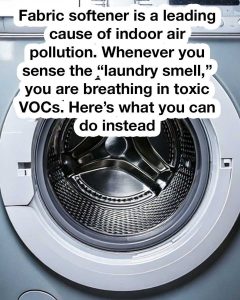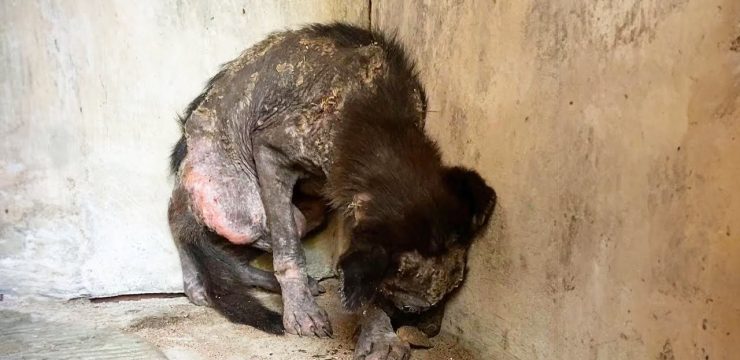As people increasingly spend more time indoors, concerns about indoor air pollution are becoming more urgent. While outdoor air quality often dominates the conversation, the air inside our homes can be just as, if not more, hazardous. One surprising contributor to this problem is fabric softeners—a staple in many households that promises fresh-smelling, soft laundry but may come at a cost to your health. These products are often overlooked when discussing indoor air pollution, yet they can release a mix of potentially harmful chemicals into the air, especially volatile organic compounds (VOCs). Understanding how fabric softeners contribute to indoor air quality issues and what steps you can take to minimize their impact can make a significant difference in your living environment.

Volatile organic compounds, or VOCs, are carbon-based chemicals that easily evaporate at room temperature. They’re commonly found in everyday household items, including cleaning products, air fresheners, paints, and even personal care products. Unfortunately, fabric softeners fall into this category as well. These chemicals are problematic because they can contribute to indoor air pollution, particularly in enclosed spaces with limited ventilation. VOCs are known to cause a range of health problems. Some of the most common ones include formaldehyde, benzene, and toluene—all of which are linked to respiratory issues, allergic reactions, and even long-term risks like cancer. Understanding VOCs is essential when trying to identify hidden pollutants in your home and take steps to eliminate or reduce them.
Fabric softeners contribute to indoor air pollution in a few key ways. First, they often include synthetic fragrances and chemical preservatives that release VOCs into the air when the product is used, especially during the drying cycle. The warmth of the dryer encourages these compounds to vaporize, filling your laundry room and surrounding spaces with a chemical-laden aroma that many mistakenly associate with cleanliness. Some fabric softeners also contain quaternary ammonium compounds—also known as “quats”—which are added for their antibacterial properties. While quats may help reduce bacteria, they’re also linked to asthma and other respiratory sensitivities. Over time, repeated exposure to these chemicals can have a cumulative effect on indoor air quality, particularly in small or poorly ventilated homes.
The familiar “laundry smell” that so many people associate with freshness is not actually the scent of cleanliness but a cocktail of synthetic fragrances. These scents are specifically engineered to be long-lasting and to evoke a sense of cleanliness, but they do so by masking odors rather than eliminating them. When heated in the dryer or disturbed by agitation, the chemicals in these fragrances become airborne and enter the indoor environment. The stronger the scent, the more VOCs are likely being released. It’s ironic that something we associate with hygiene could be undermining the very thing it’s supposed to support—our health.
Exposure to VOCs, especially from something as routine as doing laundry, may seem minimal at first glance, but the health implications can be serious—especially with consistent exposure over time. For individuals with asthma, allergies, or other respiratory conditions, VOCs can act as triggers that worsen symptoms. Children and the elderly are also more vulnerable to airborne toxins due to their developing or weakened immune systems. Even healthy individuals may experience symptoms such as headaches, fatigue, dizziness, or eye and throat irritation after prolonged exposure to VOCs. Some studies have also found links between chronic exposure and more serious health issues, including damage to the liver, kidneys, and central nervous system, as well as increased cancer risk.
Scientific research supports the concern that fabric softeners play a significant role in indoor air pollution. One notable study by the University of Washington found that popular scented laundry products—including fabric softeners and detergents—emitted more than two dozen VOCs, some of which were considered hazardous or toxic under federal law. Even more concerning is the fact that manufacturers are not required to list all ingredients on their labels, particularly those used in fragrance mixtures. This lack of transparency makes it difficult for consumers to make informed choices and highlights the need for stricter regulations and more awareness about what’s really going into our homes.
Luckily, there are safer alternatives for those who still want soft, fresh-smelling clothes without compromising their health. One of the simplest and most cost-effective options is using wool dryer balls. These reusable items help reduce static and soften fabrics without any chemicals. You can also add a few drops of essential oils to the dryer balls if you still want a subtle scent. Another effective natural alternative is white vinegar—just add half a cup during the rinse cycle. Vinegar helps soften fabric, neutralize odors, and leaves no harmful residue behind. Additionally, there are environmentally friendly fabric softeners on the market that use plant-based ingredients and natural scents, which are far less likely to release harmful VOCs into the air.
Improving indoor air quality doesn’t stop with ditching conventional fabric softeners. A more comprehensive approach includes enhancing ventilation in your living space. Try to open windows regularly, especially during and after doing laundry. Use exhaust fans in laundry rooms and bathrooms, and keep HVAC systems clean and well-maintained. Investing in a good-quality air purifier with a HEPA filter can also help capture airborne pollutants, including VOCs. Regular dusting and vacuuming will prevent the buildup of other allergens and particulates that can compound indoor air pollution. These small changes can lead to a noticeable improvement in your home’s air quality over time.
In conclusion, while fabric softeners may seem like a harmless part of your laundry routine, their impact on indoor air quality is a serious concern. The pleasant scent they leave behind is often a sign of chemical exposure rather than cleanliness. With so many alternative products and strategies available today, there’s no need to compromise your health for the sake of fragrance. Making informed decisions about household products, along with improving ventilation and air purification, can go a long way in creating a safer and healthier home. By taking these steps, not only do you protect your well-being, but you also contribute to a more environmentally conscious lifestyle—something we can all benefit from.





